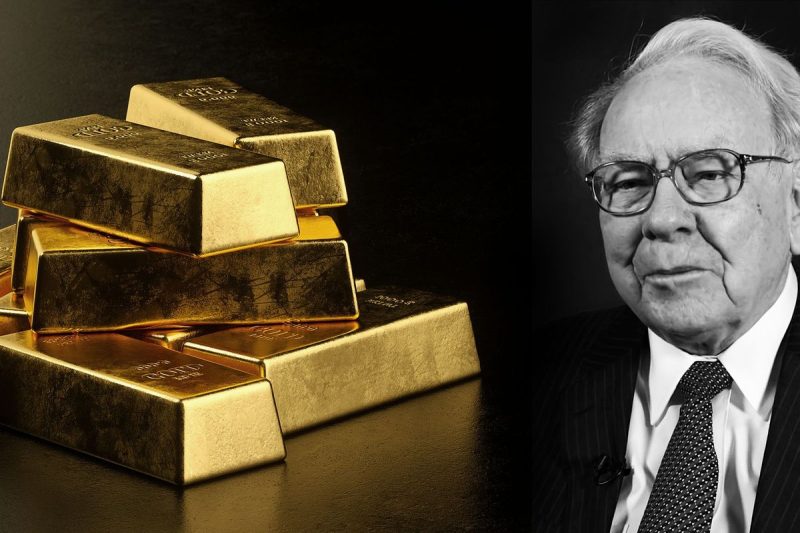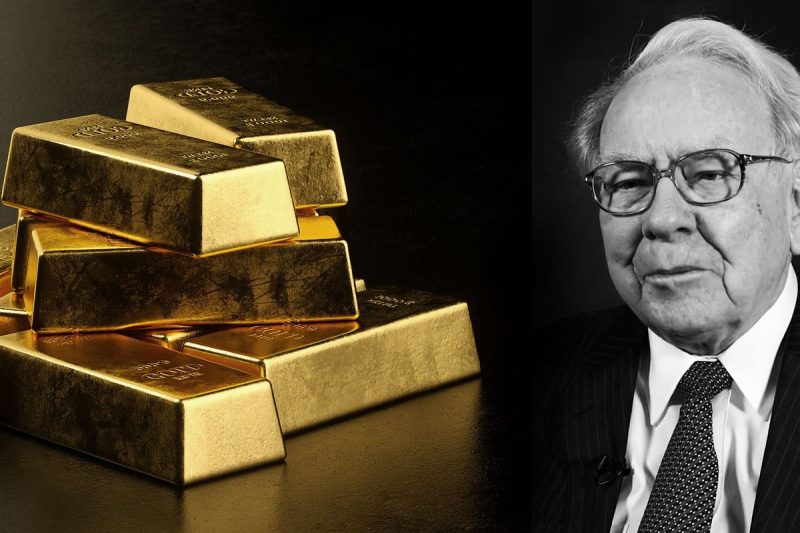
Warren Buffett has a formidable reputation as an investor — with a current net worth of nearly US$134 billion, he’s among the world’s richest people and a business role model for many.
Buffett, who runs Berkshire Hathaway (NYSE:BRK.A,NYSE:BRK.B), is also well known for being uninterested in gold. He’s made his stance on the yellow metal abundantly clear over the years, and it’s not positive — put simply, he doesn’t think gold fits in with his strategy of value investing, which involves picking stocks trading for less than they are worth.
Given Buffett’s aversion to gold, market watchers were understandably surprised when Berkshire Hathaway invested in Barrick Gold (TSX:ABX,NYSE:GOLD) in Q2 2020, paying around US$560 million for about 21 million shares of the major gold miner.
What was behind that decision? Many headlines proclaimed that Buffett had changed his mind on gold. But there were plenty of counterpoints — some suggested that it could have been another person at Berkshire that made the trade and not Buffett himself; others pointed out that there’s a difference between investing in gold and investing in a gold-mining company. Still others noted that Berkshire’s stake in Barrick was relatively small compared to its other holdings.
Ultimately Buffett’s position in Barrick turned out to be a short one. Berkshire Hathaway exited only two quarters later, which was just long enough to reap the rewards of gold’s big bump from the COVID-19 crisis. Perhaps the Oracle of Omaha was clued in to the precious metal’s status as a safe-haven asset in times of economic uncertainty.
Whatever the reason for the moves at Berkshire, it’s interesting to look back at some of the comments Buffett has made about gold. While he hasn’t spent a huge amount of time discussing the yellow metal (after all, he doesn’t like it), he’s spoken enough about it that there’s no mistaking his stance. Here’s a look at three quotes that sum up what Buffett thinks about gold.
What has Buffett said about gold?
1. “Gold … has two significant shortcomings”
“Gold … has two significant shortcomings, being neither of much use nor procreative. True, gold has some industrial and decorative utility, but the demand for these purposes is both limited and incapable of soaking up new production. Meanwhile, if you own one ounce of gold for an eternity, you will still own one ounce at its end”
— Buffett, letter to shareholders, 2011
Buffett’s 2011 letter to shareholders includes a fairly lengthy discussion on gold, which hit what was then an all-time high of around US$1,920 per ounce in September of that year.
In the letter, Buffett lays out three types of investments, placing gold squarely in the second category, which involves “assets that will never produce anything.” Buyers purchase these assets, according to Buffett, with the hope that someone else will pay more for them in the future. “Owners are not inspired by what the asset itself can produce — it will remain lifeless forever — but rather by the belief that others will desire it even more avidly in the future,” he states in the letter.
Gold advocates reacted strongly to those comments, arguing that the point of gold isn’t what it can produce; instead, its value comes from the fact that it’s a source of protection in times of crisis.
Others have pointed out that gold does in fact have a good track record of producing returns. Responding specifically to Buffett’s comment that an ounce of gold will always only be an ounce of gold, Frank Holmes, chief investment officer at US Global Investors (NASDAQ:GROW), said that the Oracle of Omaha is simply wrong about the yellow metal.
“Buffett’s always been negative on gold; his own company doesn’t pay a dividend, and his argument before was (that) gold doesn’t pay income,” said Holmes. “He’s totally wrong. Since 2000, bullion has far outperformed the S&P 500 (INDEXSP:.INX) by two to one, and it’s outperformed Berkshire Hathaway.”
2. “It won’t do anything … except look at you”
“I have no views as to where (gold) will be (in the next five years), but the one thing I can tell you is it won’t do anything between now and then except look at you” — Buffett, CNBC’s Squawk Box, 2009
Most of the other things Buffett has said about gold relate to the two failings he mentions in his 2011 letter to shareholders: the metal’s lack of utility and the fact that it’s not procreative.
During a 2009 episode of CNBC’s Squawk Box, Buffett aired his thoughts on those issues in a slightly different way. Speaking about gold in the next five years and if it should be part of a value investing strategy, Buffett said he had no opinion on where it might go — “The one thing I can tell you is it won’t do anything between now and then except look at you,” he said.
That’s in contrast to stocks like Coca-Cola (NYSE:KO) and Wells Fargo (NYSE:WFC), which Buffett said would be generating money, and lots of it. He explained, “It’s a lot better to have a goose that keeps laying eggs than a goose that just sits there and eats insurance and storage and a few things like that.”
The comment ends with another of Buffett’s well-known lines on gold, which he’s repeated in various ways over the years: “The idea of digging something up out of the ground, you know, in South Africa or someplace and then transporting it to the United States and putting into the ground, you know, in the Federal Reserve of New York, does not strike me as a terrific asset.”
For Buffett, value relates back to usefulness, and without a specific use gold has neither. Interestingly, the same thought process does not apply to silver — Buffett has put money into silver before, and believes its dual nature as both a precious and an industrial metal make it useful and therefore valuable.
3. “Gold is a way of going long on fear”
“(W)ith an asset like gold, for example, you know, basically gold is a way of going long on fear, and it’s been a pretty good way of going long on fear from time to time. But you really have to hope people become more afraid in the year or two years than they are now. And if they become more afraid you make money, if they become less afraid you lose money. But the gold itself doesn’t produce anything” — Buffett, CNBC’s Squawk Box, 2011
Buffett has also spoken fairly extensively about his belief that people who buy gold are essentially betting on fear. The quote above is from a 2011 episode of CNBC’s Squawk Box, but he also brings this idea up in his 2011 letter to shareholders.
“What motivates most gold purchasers is their belief that the ranks of the fearful will grow,” he says in the letter. And indeed, gold is often described as a safe-haven investment, meaning that people flock to it in times of turmoil in order to feel more secure and to balance out other areas of their portfolios.
While Buffett admits that “during the past decade this belief has proved correct” — in other words, fear did spur gold demand — overall he sees going long on fear as a problem. Again he goes back to the idea that gold lacks utility and is not procreative.
As he explains, all the gold in the world at the time would be worth US$7 trillion. By his calculations, that’s equivalent to roughly a billion acres of farmland in the US plus seven ExxonMobils (NYSE:XOM) and with an additional US$1 trillion to spare.
“And if you offered me the choice of looking at some 67-foot cube of gold … and the alternative to that was to have all the farmland of the country, everything, cotton, corn, soybeans, seven ExxonMobils. Just think of that. Add $1 trillion of walking around money. I, you know, maybe call me crazy but I’ll take the farmland and the ExxonMobils,” he said.
Will Buffett change his mind about gold?
Berkshire’s Barrick investment was certainly a surprise for many, but it doesn’t necessarily mean that Buffett has changed his mind about gold. He’s been consistent in his approach to the precious metal for years, and it seems unlikely that he’ll do an about-face any time soon.
Securities Disclosure: I, Melissa Pistilli, hold no direct investment interest in any company mentioned in this article.

